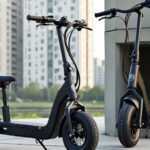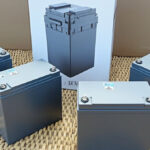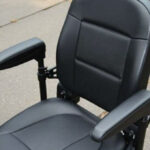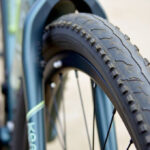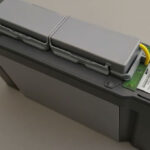If you’ve been curious about eco-friendly transportation, an electric bike conversion kit might be the perfect solution for you. Imagine changing your favorite bike into an e-bike, gaining that extra boost without buying a whole new cycle. Here’s a quick guide to help you understand what it’s all about:
Benefits of Electric Bike Conversion Kits:
- Cost-Effective: Cheaper than buying a new e-bike.
- Eco-Friendly: Reduce your carbon footprint.
- Urban Mobility: Ideal for city commuting.
- Customization: Tailor your bike to your needs.
In this complete guide, we’ll cover everything you need to know to get started on your journey to sustainable, efficient, and thrilling biking experiences.
Why Convert Your Bike to an E-Bike?
Cost-Effective
One of the biggest advantages of using an electric bike conversion kit is the cost savings. Instead of spending upwards of £1,000 on a new e-bike, you can convert your existing bike for around £500 to £800. This makes it an affordable option for many people.
Consider this: If you use your e-bike to replace short car journeys, you’ll save on fuel, parking, and maintenance costs. Over time, these savings can quickly add up, making the initial investment in a conversion kit well worth it.
Customization
With an electric bike conversion kit, you can tailor your bike to meet your specific needs. Whether you need a powerful motor for hilly terrains or a compact battery for city commuting, there’s a kit for you.
For example, the Cytronex kit offers a smooth and intuitive power delivery, making it ideal for commuting. On the other hand, the Bafang Front Hub Motor kit provides a powerful setup that’s perfect for those who need a bit more oomph.
Sustainability
Converting your bike to an e-bike is a great way to reduce your carbon footprint. Bikes are already eco-friendly, but adding electric assistance makes them even better. You’ll be more likely to choose your bike over a car for short trips, significantly lowering your emissions.
Governments are also encouraging this shift. The UK’s Fix your Bike Voucher Scheme offers £50 vouchers to get your bike roadworthy again, making it even easier to go green.
Convenience
An e-bike conversion kit adds a layer of convenience to your daily life. Imagine zipping through traffic, taking shortcuts, and never worrying about parking. E-bikes can take more direct routes and are less affected by traffic, saving you time on your commute.
Additionally, e-bikes can help you carry heavier loads with ease, making those grocery runs or school drop-offs a breeze. With the extra power, you’ll find yourself using your bike more often, integrating it seamlessly into your daily routine.
Next, we’ll dig into the different types of electric bike conversion kits available, helping you choose the one that best suits your needs.
Types of Electric Bike Conversion Kits
When it comes to converting your regular bike into an e-bike, there are several types of electric bike conversion kits to choose from. Each type has its own set of advantages and drawbacks. Here’s a breakdown to help you decide which one might be best for you.
Front Hub Motors
Front hub motor kits are one of the most straightforward options. These kits replace your bike’s front wheel with a motorized one.
Pros:
- Easy Installation: Simply swap out the front wheel, attach the battery, and you’re good to go.
- Good Balance: The motor in the front and battery in the back can balance the bike well.
- Affordable: Generally, these kits are less expensive compared to mid-drive systems.
Cons:
- Handling: The added weight on the front wheel can affect the bike’s handling, especially on rough terrain.
- Power Delivery: Power delivery might feel less natural compared to mid-drive systems.
Rear Hub Motors
Rear hub motor kits place the motor in the rear wheel. This is another popular choice for e-bike conversions.
Pros:
- Powerful: Rear hub motors can handle more power, making them suitable for hilly terrains.
- Better Traction: Having the motor at the rear wheel improves traction, especially during acceleration.
Cons:
- Complex Installation: Installing a rear hub motor is a bit more complex, often requiring more tools and time.
- Weight Distribution: The added weight at the back can make the bike feel back-heavy.
Mid-Drive Motors
Mid-drive motor kits are often considered the best for performance and ride quality. These kits place the motor at the bike’s crank, providing power directly to the pedals.
Pros:
- Natural Ride Feel: Power is delivered directly to the crank, making the ride feel more natural.
- High Torque: Excellent for climbing steep hills and off-road riding.
- Balanced Weight: The motor is centrally located, improving overall bike balance.
Cons:
- Complex Installation: Installing a mid-drive motor can be challenging and may require professional help.
- Cost: These kits are generally more expensive than hub motor kits.
Friction Drive Systems
Friction drive conversion kits use a roller that pushes against the bike’s tire to provide propulsion.
Pros:
- Simple Installation: Easy to install and remove, making it a good option for temporary conversions.
- Lightweight: These kits are usually lighter than hub or mid-drive systems.
Cons:
- Efficiency: Not as efficient as other systems; you might experience more wear on your tires.
- Limited Power: Generally, these systems offer less power compared to hub or mid-drive motors.
Top 6 Electric Bike Conversion Kits in 2024
Explore the top choices for electric bike conversion kits available in 2024, each offering unique features and benefits to suit different needs and preferences.
Swytch eBike Conversion Kit
The Swytch eBike Conversion Kit is known for its easy installation and compact battery. This kit features a front hub motor, making it one of the simplest to fit. Just swap out your front wheel, wire up the controller and battery, and you’re ready to go. The battery is small and easy to remove, making it convenient to charge and carry.
Pros:
- Easy installation
- Compact and removable battery
- Discreet front hub motor
Cons:
- Limited to front wheel drive
- Range depends on battery size
Mid Drive Motor Kit
The Mid Drive Motor Kit is prized for its lightweight design and high torque. This mid-drive motor fits at the center of the bike, providing balanced weight distribution and improved performance on steep hills and off-road terrain. You’ll need to source your own battery, but this allows for customization based on your needs.
Pros:
- Lightweight for a mid-drive
- High torque for better hill climbing
- Compatible with a wide range of bike designs
Cons:
- Requires separate battery purchase
- More complex installation
Rear Wheel Kit
For those on a budget, the Rear Wheel Kit is an affordable option. This rear hub motor conversion kit offers good power but does require some additional waterproofing if you plan to ride in wet conditions. Installation can be a bit fiddly, especially when fitting the pedal sensor.
Pros:
- Affordable
- Powerful rear hub motor
- Good for hilly terrains
Cons:
- Requires separate battery purchase
- Connectors are not waterproof
High Torque Mid Motor Kit
The High Torque Mid Motor Kit is ideal for off-road enthusiasts. This mid-drive motor delivers high torque, making it perfect for rugged terrains and steep hills. However, the motor’s position can limit ground clearance, and you’ll need to source your own battery.
Pros:
- High torque for off-road use
- Balanced weight distribution
- Compatible with various bike types
Cons:
- Limited ground clearance
- Complex installation
Friction Drive Conversion Kit
The Friction Drive Conversion Kit excels in compatibility and quick installation. This friction drive system is easy to attach and features regenerative braking. The motor sits on top of the rear tire, pushing it around from above, which makes it unique.
Pros:
- Quick and easy installation
- Wireless system
- Regenerative braking
Cons:
- Increased tire wear
- Limited range with base model
Front Hub Motor Kit
The Front Hub Motor Kit offers great value and is available in multiple wheel sizes. This kit replaces the bike’s front wheel with a motorized one, making it straightforward to install. It provides a decent balance of power and ease of use.
Pros:
- Good value for money
- Available in different wheel sizes
- Easy installation
Cons:
- Front wheel drive only
- Can be fiddly to set up correctly
How to Choose the Right Electric Bike Conversion Kit
Choosing the right electric bike conversion kit can feel overwhelming, but focusing on a few key factors will help make the decision easier. Here’s what you need to consider:
Compatibility
First and foremost, ensure the kit you choose is compatible with your bike. Check the dimensions of your bike’s forks, the width of the rear stays, and the wheel sizes. You’ll also need to know the type of brakes your bike has. Disc brakes are recommended because they provide better stopping power, especially with the added weight of the conversion kit.
Motor Location
The location of the motor can affect the balance and handling of your bike. There are three main types:
-
Front Hub Motors: These are the easiest to install and maintain. They replace the front wheel, making them a good choice for beginners. However, they can make the front of the bike heavier, which might affect handling.
-
Rear Hub Motors: These provide better traction and balance since the weight is at the back. They are a bit more complex to install compared to front hub motors.
-
Mid-Drive Motors: These are mounted at the center of the bike, providing a balanced weight distribution. They are excellent for hill climbing and off-road riding but require more effort to install.
Battery Type
Batteries power the motor and come in different voltages and capacities. Here’s what to look for:
-
Voltage: Most kits use either 36V or 48V batteries. A higher voltage battery (like 48V) will generally offer more power and speed.
-
Capacity: Measured in watt-hours (Wh), the capacity determines how far you can ride on a single charge. For instance, a 200Wh battery paired with a 250W motor can get you around 25-30 km on mixed terrain.
Wattage Rating
The wattage rating of the motor affects the bike’s performance. Here are some common ratings:
-
250W: Suitable for flat terrains and light use. This is the legal limit in many countries, including the UK and EU.
-
500W: Offers more power and is good for hilly areas and heavier riders. It’s legal in some places, like certain US states.
-
750W and above: These provide even more power and speed but are often classified as mopeds or motorcycles, requiring registration and insurance.
Additional Tips
-
Research Brands: Don’t shy away from lesser-known brands. Many have solid reputations and offer reliable products. Always read reviews and do your homework.
-
Consider the Warranty: Installing a conversion kit might void your bike’s original warranty. Check the terms before making any modifications.
-
Legal Considerations: Make sure the conversion kit complies with local e-bike laws to avoid any legal issues.
Next, let’s dive into a step-by-step guide on how to install your electric bike conversion kit.
Step-by-Step Guide to Installing an Electric Bike Conversion Kit
Ready to transform your regular bike into an e-bike? Follow these simple steps to install your electric bike conversion kit.
1. Swap Tyre and Tube
First, remove the tyre and tube from your current front wheel. You’ll need some tyre levers and a pump for this task.
-
Install the Tyre and Tube on the New Wheel: Take the new wheel from your conversion kit and fit the tyre and tube onto it. Make sure the tyre is mounted correctly if it’s directional. The cable sticking out of the hub should be on the left-hand side (non-drive side) when the wheel is installed in the bike.
-
Secure the Wheel: Once the tyre and tube are in place, install the new wheel into the bike’s front fork. Tighten the nuts on the wheel’s axle to keep it firmly in place. Check that the brakes are correctly adjusted for the new wheel.
2. Attach the Bracket to the Handlebars
Next, you’ll need to attach the bracket for the LCD display to your handlebars.
- Secure the Bracket: There is a strap that needs to be attached to the bars to keep the bracket in place and stop it from rotating. Use the included adaptors if your handlebars are skinnier. Tighten the screws to clamp the bracket tightly to the bars.
3. Install Magnet Disc and Sensor
The magnet disc and sensor are crucial for detecting when you’re pedaling, so the motor knows when to assist.
-
Attach the Magnet Disc: The magnet disc has a split design, allowing it to clip around the inside of the left (non-drive side) crank. Secure it with the retention ring.
-
Position the Sensor: Stick the sensor on the frame directly in line with the magnets on the disc. This ensures that the sensor can accurately detect the crank’s movement.
4. Plug in the Cables
Finally, connect all the necessary cables to get your e-bike running.
-
Connect the Main Power Cable: Plug the thickest cable into the cable extending from the hub motor.
-
Attach the Cadence Sensor Cable: Connect the orange cable to the cadence sensor. This ensures the system knows when you’re pedaling.
-
Tidy Up the Cables: Use cable ties to secure the cables and prevent them from getting caught on the spokes or cranks.
-
Optional Brake Sensor Upgrade: If your kit includes blue cables, these are for an optional brake sensor upgrade. You can skip this step if not needed.
By following these steps, your bike should now be ready to ride as an e-bike. Next, we’ll address some commonly asked questions about electric bike conversion kits.
Frequently Asked Questions about Electric Bike Conversion Kits
How much does it cost to convert your bike to electric?
Converting your bike to an e-bike can be a cost-effective way to enjoy the benefits of electric biking without buying a new e-bike. Prices for electric bike conversion kits vary widely based on the type and quality of the components:
- Budget Options: Kits start around $339.99, which includes basic components like a hub motor, controller, and throttle.
- Mid-Range Kits: Expect to pay between £500 and £800 for reputable brands. These kits often include higher quality motors and larger batteries.
- Premium Kits: High-end kits can go over $1,000. These typically offer advanced features like app integration, better build quality, and longer battery life.
Is an e-bike conversion kit worth it?
Whether an electric bike conversion kit is worth it depends on several factors:
- Performance: While you won’t get the top-tier motors and integrated batteries found in high-end e-bikes, conversion kits still offer significant performance improvements. They can help flatten hills, increase speed, and extend your riding range.
- Cost Savings: By converting your existing bike, you save on the cost of buying a new e-bike, which can be quite expensive. You can also reduce car usage, saving on fuel and maintenance costs.
- Legal Considerations: Make sure to check local laws regarding e-bikes. For example, in the UK and EU, bikes with a speed limiter over 25 km/h are classified as mopeds, requiring different regulations.
Can you convert any regular bike to an e-bike?
Most bikes can be converted to an e-bike with the right kit, but there are some compatibility considerations:
- Bike Types: Mountain, road, hybrid, and commuter bikes are generally good candidates. Specialized bikes might require more specific kits.
- Motor Location: Hub motors are common and easy to install. Mid-drive motors are more efficient but can be harder to fit.
- Battery Type: Choose a battery that suits your needs. Larger batteries offer more range but are heavier.
- Installation Tips: Make sure to check the wheel diameter, brake type, and axle standards. For crank-driven systems, ensure your bike has a bottom bracket width between 68 and 73mm.
By considering these factors, you can choose the best electric bike conversion kit for your needs and ensure a smooth installation process.
Conclusion
Converting your regular bike to an electric bike using an electric bike conversion kit can be a game-changer. It offers a cost-effective, customizable, and eco-friendly way to improve your cycling experience.
Summary
Electric bike conversion kits provide an affordable alternative to purchasing a new e-bike. They allow you to upgrade your existing bike with electric power, making cycling easier and more enjoyable. With options ranging from front hub motors to mid-drive systems, there’s a kit for every type of rider and bike.
Benefits
- Cost-Effective: Converting your bike can save you hundreds, if not thousands, of dollars compared to buying a new e-bike.
- Customization: Choose the components and features that best suit your riding style and needs.
- Sustainability: Reduce your carbon footprint by opting for a greener mode of transportation.
- Convenience: Easily switch between powered and non-powered modes, making it versatile for various terrains and purposes.
Doot Scoot
At Doot Scoot, we offer a range of electric bike conversion kits designed to meet the needs of every cyclist. Our kits are easy to install, reliable, and backed by excellent customer service. Whether you’re a commuter, a weekend warrior, or an off-road enthusiast, we have the right solution for you.
Eco-Friendly Transportation
Switching to an electric bike is not just about convenience and cost savings; it’s also about making a positive impact on the environment. By reducing your reliance on cars, you contribute to lower emissions and a healthier planet.
In conclusion, an electric bike conversion kit is a smart investment for anyone looking to improve their cycling experience while promoting eco-friendly transportation. Visit Doot Scoot to explore our range of kits and start your journey towards a greener, more efficient way of getting around.

